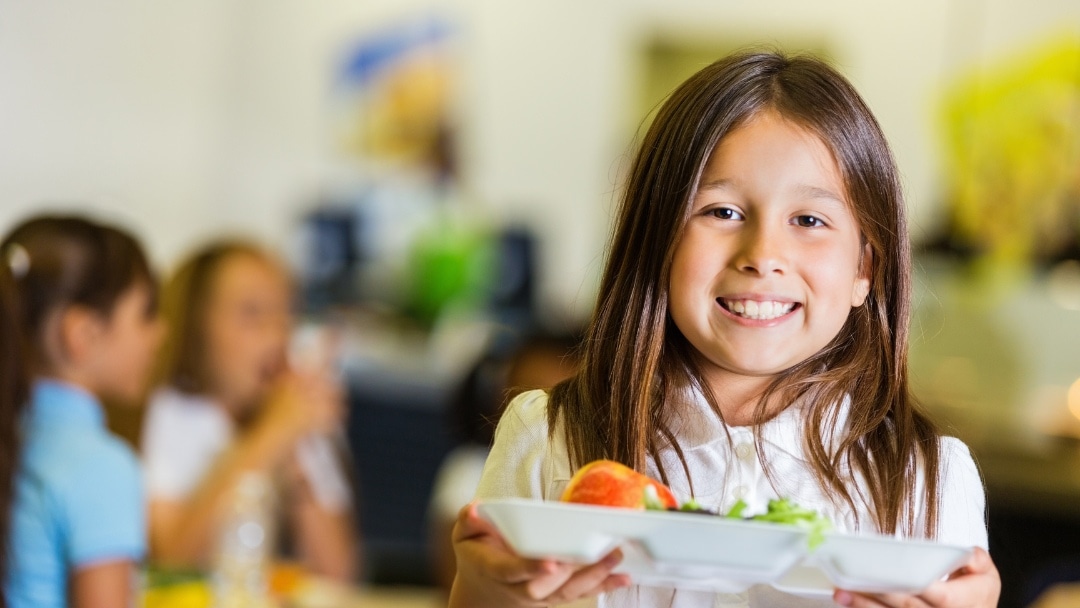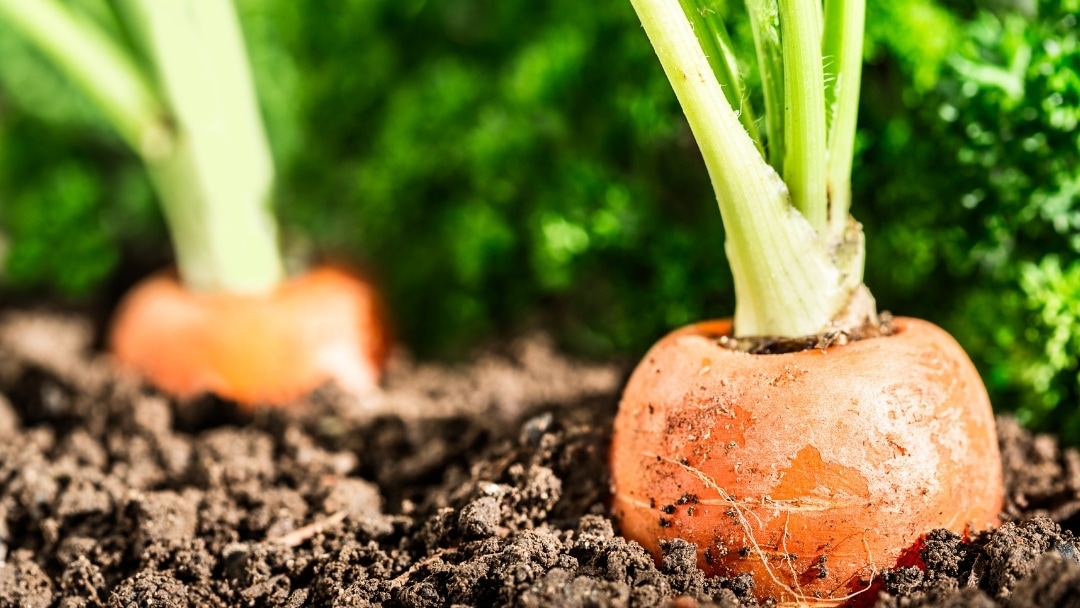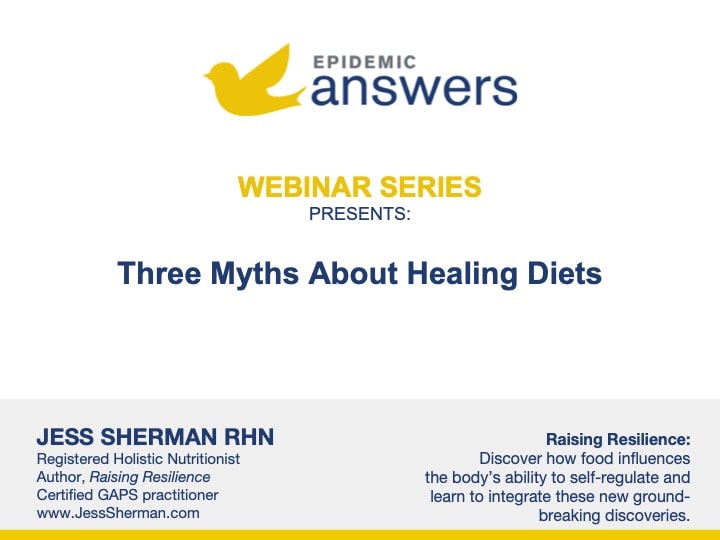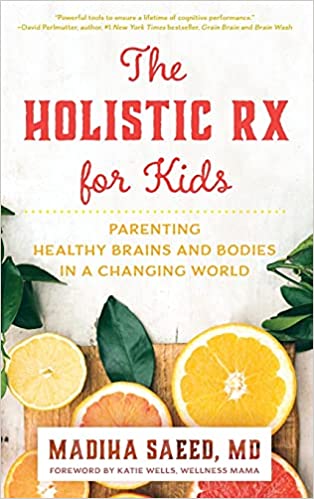Alyce Ortuzar fills us in on what’s in a school lunch, how it relates to your child’s health, how to improve it and how to get your kids involved in the process.
It’s lunchtime at school. What are your kids eating? Here are some possibilities:
- Meat and dairy products with government-approved pesticides and endocrine- disrupting hormones
- U.S. Department of Agriculture-subsidized irradiated beef or chicken from sick and stressed animals raised under unsanitary and inhumane conditions
- Products loaded with chemicals and devoid of nutrients qualifying as food, such as artificial strawberry-flavored milkshakes containing such mystery ingredients as:
-
- Amyl acetate
- Anethol
- Anisyl formate
- Benzyl isobutyrate
- Dipropyl ketone
- Ethyl butyrate
- Phenethyl alcohol
- Rum ether
- Solvent
What’s Wrong with Additives?
Research shows that pesticides and hormone-disruptors are neurotoxic to growing brains. In the 1970s, pediatrician Benjamin Feingold linked food additives, dyes and other additives to hyperactive behavior and learning problems. Removing these poisons and putting children on the diet known as the Feingold diet of salycilate-free fresh fruits, vegetables, and other minimally processed foods produced dramatic improvements in behavior and learning.
How Did School Lunch Programs Get Like This?
Many administrators sign exclusive contracts with money-hungry corporations for food, beverages, and school supplies, all with corporate logos. Without parental approval, community discussions, or analyses of benefit versus harm, these administrators offer the highest bidder unrestricted access to their students in school lunch programs.
According to Marion Nestle, author of Food Politics: How the Food Industry Influences Nutrition, and Health, Revised and Expanded Edition (California Studies in Food and Culture, removing commercialism from schools teaches kids important values.
Healthy food is also the first line of defense against the epidemics of children’s chronic health conditions.
Won’t Students Starve?
Many think children will starve if offered only nutritious alternatives. Nestle believes that when food tastes good, kids gobble it up and ask their parents to stop buying junk. They like learning where food comes from, how it is produced, and how to prepare it themselves. When children eat food they have planted, nurtured, harvested and prepared, they re-connect with nature, the true source of life.
One middle school in Berkeley, California found this to be true. They replaced an abandoned asphalt lot with soil sheltered by an arbor made from kiwi vines intertwined with willow and recycled wood. The result: a bountiful garden next to a compost play area. Kids happily learn from both.
Geoffrey Canada, president of the Harlem Children’s Zone, also sees results. His non-profit sponsors the lunch program at Promise Academy, a charter school in one of New York’s poorest sections. While children resisted at first, they now happily down turkey chili, brown rice and cabbage, with apples, not cake, for dessert. Whenever possible, Promise Academy’s lunches use locally grown food, prepared on-site.
Farm-to-cafeteria projects allow schools to purchase local foods from small ecological farmers.
Integrate Nutrition and Cooking into the Curriculum
The Lunchroom as Classroom
In The Edible Schoolyard, Alice Waters, food advocate and owner/chef of the San Francisco organic restaurant Chez Panisse, presents the lunchroom as an extension of the classroom. A time-tested traditional set of values is inherent in growing, cooking and serving healthy food.
Curriculum and school lunch programs that reinforce these values teach children healthy eating habits. The Center for EcoLiteracy works with The Edible Schoolyard and other school programs through its Food Systems Project. Go to both websites to learn reasons for and how to start a garden at your school.
Besides growing food for lunch, a garden provides opportunities for integrating the science, math, and art curricula. Kids love insect identification, measuring the plot and recreating the beautiful flowers and vegetables with paints and pastels.
Cooking with Kids
Cooking with Kids in Santa Fe, New Mexico, adds a multicultural component to their food education program. Their hands-on learning program includes information about culturally diverse foods, including geography, social studies, story-telling and music in meals the children prepare themselves.
Farm-to-School Programs
Hands-on farm-to-school education programs recommends farm field trips with lessons that link the land to the school cafeteria. Go to The National Farm-to-School Network website and click on the map to find a local participant. Explore local farm-to-school experiential food education programs such as cooking classes, internships, summer camps and fundraisers. Doing so can produce innovative ways to link farm-fresh products in school lunch programs with experiential education activities.
Nourish Mind, Body and Soul
Innovative lunch programs nourish the minds, bodies and the souls of our students. Kids also learn the importance of environmental sustainability and small-scale agriculture. Learning to value responsible farming, appreciate the beauty of traditional farmland and understand the relationships among community, nutrition, and learning can start young. Then, our students may demand what Pennsylvania farmer Kim Seeley calls “food fit for children” both at home and at school.
Alyce Ortuzar is a medical researcher in Maryland.
Still Looking for Answers?
Visit the Epidemic Answers Practitioner Directory to find a practitioner near you.
Join us inside our online membership community for parents, Healing Together, where you’ll find even more healing resources, expert guidance, and a community to support you every step of your child’s healing journey.
Resources
Books
Nestle, Marion. Food Politics: How the Food Industry Influences Nutrition and Health (Volume 3). University of California Press, 2013.
Waters, Alice. Edible Schoolyard: A Universal Idea. Chronicle Books, 2008.
Websites




